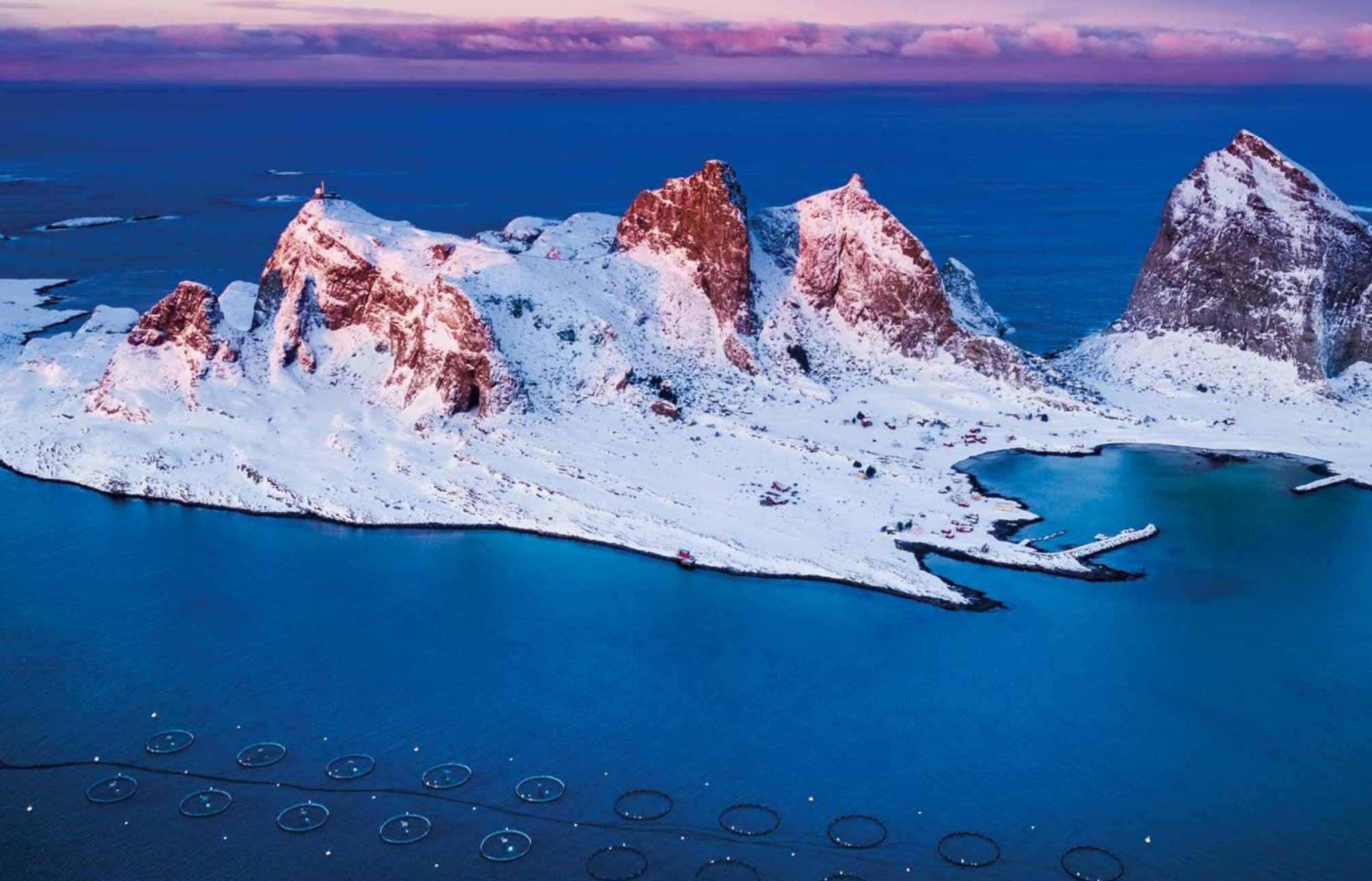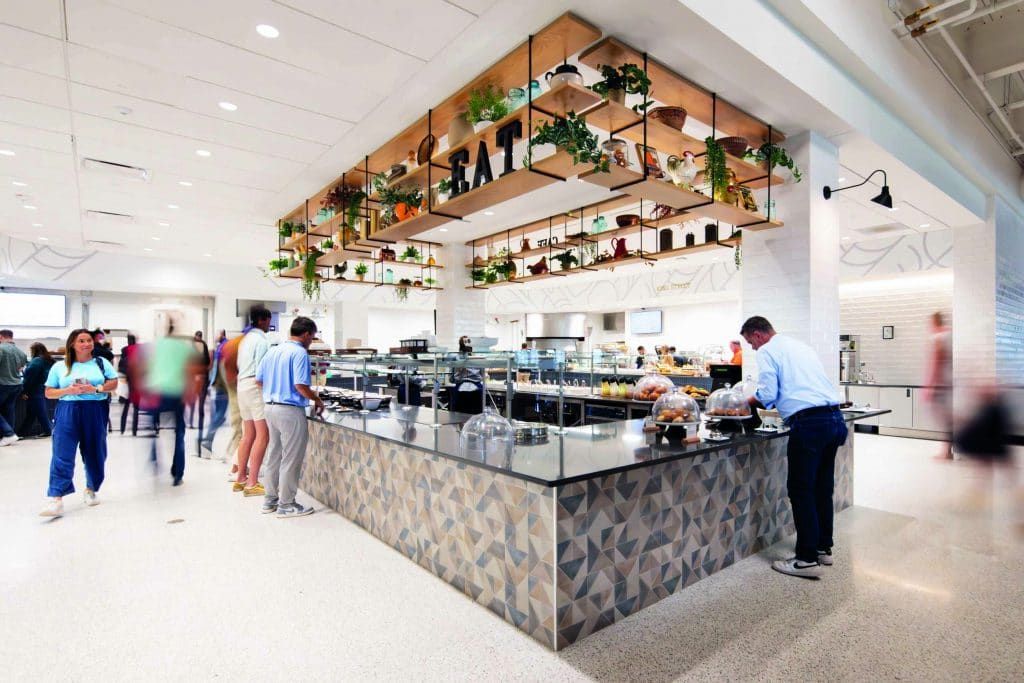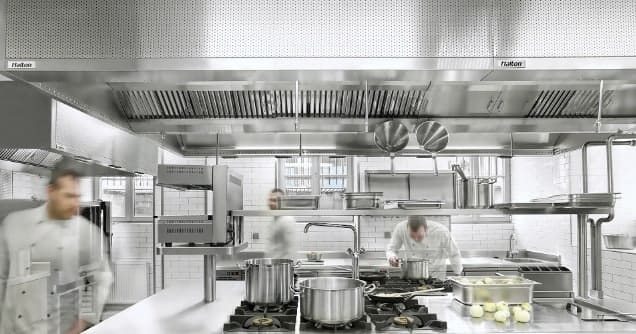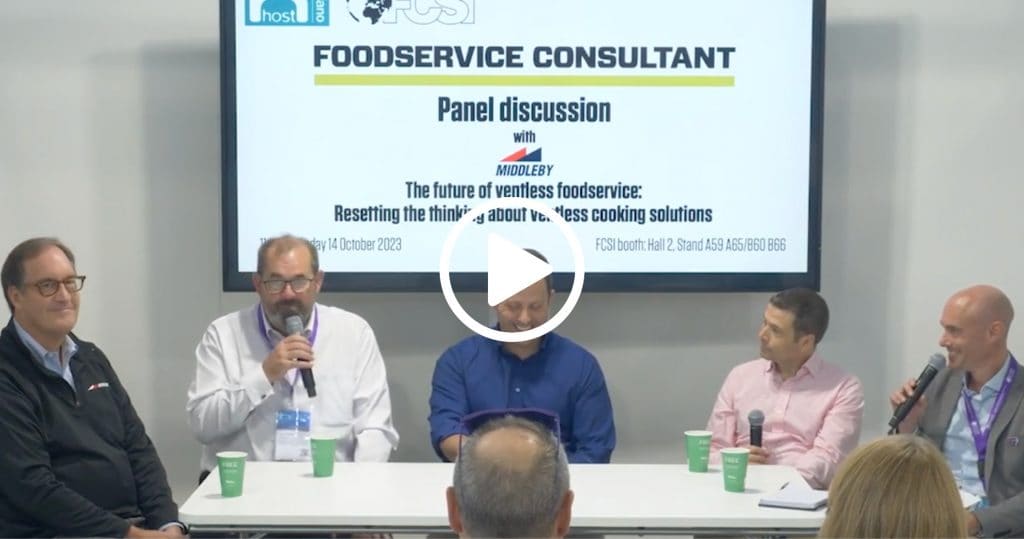
For the past two decades, Scottish-born chef and fisherman Roderick Sloan has been taking small boats into the Arctic in search of spiky sea urchins and meaty mahogany clams. His marine treasures, which appear on menus at elite restaurants such as Copenhagen’s Noma and Jaan in Singapore, are painstakingly handpicked or trapped on a five-year rotation, and he harvests a mere fraction of the shellfish he finds.
When asked what should be done to ensure the future of fish, Sloan – a craggy-featured 49-year-old – replies that there should be, “a global moratorium on fishing,” before settling on a more practical response: “We need to improve aquaculture. It’s the way forward.”
It seems an ironic stance for someone whose livelihood depends on wild-caught seafood, but his feelings about the topic motivated him to make aquaculture the focus of last autumn’s Arktiskmat food congress, which brought industry leaders and renowned chefs such as Pierre Koffmann and Nathan Outlaw to the sleepy town of Mosjøen, in northern Norway, to start a conversation about the future of fish farming.
While the issue of declining wild marine stocks has been covered widely in recent years, aquaculture is seldom discussed in the restaurant industry, and farmed seafood struggles to combat negative associations among consumers. Yet, aquaculture accounts for more than half the fish we eat today, according to a 2018 report released by the Food and Agriculture Organization (FAO) of the United Nations. Global aquaculture production has increased by 228% in volume and 492% since 1995, and FAO statistics record 598 aquatic species in cultivation.
That figure is projected to grow, given the world’s burgeoning appetite for seafood: Global per capita fish consumption has risen from 9kg in 1961 to 20kg in 2016. Based on the current fish demand/supply imbalance, the organisation estimates that overall production will need to increase by 9.9% per year to fill the gap in the short term.
Being responsible
For many, the mention of modern fish farming brings to mind environmental hazards. Diseases arising in shrimp ponds destroyed hundreds of thousands of acres of mangrove forests in Southeast Asia before stricter regulations were implemented. In 2007 large-scale salmon farming came under scrutiny after the discovery that outbreaks of salmon anemia in Chile during the 1990s had spread around the world. The industry faces threats from parasites such as the salmon louse, and pollution caused by antibiotics, chemicals and pesticides – in addition to nitrogen-based fish waste, which depletes oxygen in the water.
Historical accounts of aquaculture, however, depict remarkably extensive and sustainable systems. Describing aquaculture infrastructure during Greco-Roman times in The Oxford Handbook of Animals in Classical Thought and Life, scholar Geoffry Kron writes: “The fish tanks known to us along the Tyrrhenian coast alone represent a capacity for intensive fish farming production comparable to that of the Italian industry at the end of the 20th century.”
The origins of the practice date back even further. Aboriginal groups in Victoria, Australia, built elaborate networks of channels and dams to breed eels up to 8,000 years ago, while fish farming in Tang Dynasty China led to the emergence of the world’s first integrated agriculture-aquaculture systems. Centuries ago, the Dong people living in China’s Guizhou Province bred fish and raised ducks in rice paddies creating a basic form of closed-loop aquaponics; waste from the fish fertilises the fields, and ducks control pests by eating insects. Similar methods were practised in Japan and are being revived today by a handful of growers.
Responsible approaches are gradually making a resurgence, particularly among smaller producers and in the developing world. Speaking at Arktisk Mat, FAO representative Henry DeBey presented UN-supported initiatives that foster the development of sustainable aquaculture. In Bangladesh, for example, where the rapid growth of shrimp farming has resulted in environmental degradation, the organisation provided monitoring tools to assess the effect of shrimp aquaculture on habitats and landscapes to help farmers curb negative impacts.
The FAO’s latest project is a solar-powered aquaponics farm in the Algerian desert that provides tilapia for local consumption and uses water fertilised by fish waste to grow high-value lettuce crops for restaurants and export.
“I’m optimistic about innovations in this sector. There are people doing creative and exciting things,” DeBey says. He points to pioneering producer Bren Smith, a former fisherman whose Long Island Sound ocean farm, Thimble Island Oyster Co, offers a model of 3D farming – a method that utilises the entire water column to cultivate kelp, along with a variety of shellfish species such as oysters, mussels and scallops at different depths. Kelp and bivalves absorb nitrogen, thus improving water quality, and the farm itself acts as an artificial reef, attracting other species and contributing to biodiversity. The GreenWave organisation Smith founded seeks to replicate the model worldwide.
Supporting ethical producers
In recent years, the aquaculture industry is also developing more sustainable food for carnivorous fish such as salmon. “The use of fishmeal in feed is one of the biggest problems. It’s vital to ask suppliers about the kind of feed they’re using,” says Sloan, explaining that small pelagic fish such as anchovies and sardines are over-exploited to produce fishmeal and oil for conventional feed.
A 2017 study in the journal Fish and Fisheries revealed that 25% of the global catch of seafood is used to make fishmeal, with aquaculture accounting for an estimated 70% of fishmeal. These days, more salmon farms are incorporating plant-based soy alternatives and seaweed to reduce the amount of fish protein and oil in the feed. At Nova Sea, a major salmon producer located off the coast of northern Norway, sales director Bjørn Olvik says the company is experimenting with feed that contains algae oil and protein derived from black fly larvae. Bycatch from wild fisheries that would otherwise be discarded provides fish-based proteins.
“We’re not using any unsustainable ingredients for our feed. If we’re going to grow as an industry, we can’t depend on wild fisheries to source materials,” Olvik says. However, despite improvements in operating practices and the overall quality of products, farmed seafood still lacks the cachet of wild varieties.
“One of the things that comes up all the time is this conversation about wild versus farmed fish. There are good producers and bad producers, and it’s our job to figure out who they are and advocate for the good ones,” notes Arlene Stein, executive director and founder of the Terroir Symposium, a series of international events examining issues in the hospitality industry.
In a panel discussion on aquaculture at the Toronto Terroir Symposium in May, Stein posited that chefs have an important role in promoting sustainably cultivated seafood. Including farmed fish on menus – especially at fine-dining restaurants – and encouraging staff to tell the story of the producers, she says, can affect consumer behaviour.
“Food is sexy and interesting, and it can help people become more environmentally aware. But [ethical producers] need social and economic support,” she says.
In Germany, chefs like Tohru Nakamura have helped create market demand for farmed Danube salmon, a giant freshwater fish that was near extinction. He buys the fish from a boutique farm north of Munich and serves it at his two-Michelin-starred restaurant Werneckhof. Ana Ros of Hisa Franko spearheaded a similar awareness campaign that saved the endangered marble trout, which is now bred at a high-tech aquaculture center in Slovenia’s Soca Valley.
Top restaurants such as Raw and Mume in Taipei source super-premium local caviar from Fish Country farm, which operates two facilities in Taiwan. Unlike most caviar producers, Fish Country utilises the whole sturgeon, selling it smoked at shops and preparing a variety of dishes with the flesh – everything from the sliced skin, which tastes faintly of seaweed, to the head, which comes in a bubbling hot-pot dish – at the small restaurant on the farm’s site near Kaohsiung. The bones are rendered into fish essence, a concentrated broth drunk as a health tonic.
Taste of the future
Naturally, luxury niche products come with a hefty price tag, but some fish farmers are working to scale production in order to make prices more competitive without compromising quality. In Ontario, Canada, Planet Shrimp relies on sophisticated filtration and monitoring systems to cultivate shrimp without the use of antibiotics or growth hormones, in land-based tanks stacked six levels high. Waste collected from the crustaceans is turned into fertiliser pellets, adding to the eco-friendly appeal of the final product. Currently, the company produces around 300,000 pounds per year, but Planet Shrimp executives aim to more than double capacity and, eventually, lower prices, which retail between $30 and $42 CAD per pound.
“The company has a great message and they make a good product, but it’s expensive,” says Canadian chef Olivia Simpson, offering me an appetiser of shrimp cocktail with Peruvian aji amarillo dipping sauce, alongside crispy fried shrimp heads, at the Toronto Terroir welcome reception. “If they can get the price down even a little bit, a lot more chefs would use their shrimp.”
The plump, pink shrimp tail is sweet and pleasantly meaty, if a tad firm in texture. But the crunchy heads, filled with umami-rich goo, are addictive; I pop five into my mouth in quick succession. If this is the taste of the future, I’m on board.
Melinda Joe




